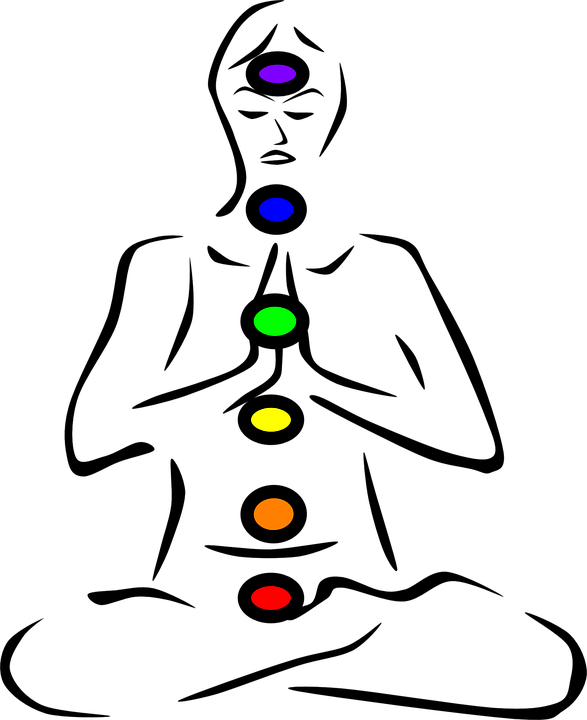There is a lot of mysticism and an overload of information when it comes to understanding the concept of chakras.
We read about strange words, chants, colors, symbols and sound associations. Meditation and breath healing find their way into the conversation, too.
But what are these chakras? And how do they impact our everyday life?
Let’s start with understanding the three concepts that are the fabric of this mystical practice.
In Yogic philosophy, Prana is the collective cosmic energy, or collective life force, that permeates all levels of the universe—including our physical bodies.
Prana, or the collective life force, flows through the entire body in an invisible network of energy channels called nadis. Imagine thousands of invisible lines that run across the body.
This invisible network pattern of nadis overlays the nervous system. As a result, Prana has an impact on a person’s physical, mental and emotional health.
In the yogic context a “chakra,” which is the Sanskrit word for circle or wheel, refers to concentrated energy vortex located in different parts of the body. Essentially, chakras are places where the pranic energy is present in high concentration; they are the energy vortices of Prana.
To recap thus far:
Prana: The cosmic life force.
Nadi: The invisible network carrying the Prana flow throughout the body.
Chakra: particular places in the body where Prana is highly concentrated in a vortex-like formation.
When Prana flows through the body uninterrupted, the body is healthy, the mind has clarity and the soul is connected to the higher cosmos. The chakras control the circulation of this pranic energy permeating the entire body. If the chakras are blocked and aren’t doing what they are supposed to, Prana is blocked and doesn’t flow freely.
That’s when the toxins build up and the body gets sick; the mind is disturbed, and the soul doesn’t connect to the higher cosmos.
Although, there are multiple nadis in the body, most writings or practices surrounding chakras are focused on the Sushumna Nadi, which is the network pathway that corresponds to the spinal cord (the Central Nervous System). The Sushumna originates at the perineum and ends at the top of the head.
The placement of the chakras on the Sushumna pathway aligns with major nerve plexuses and endocrine glands, so there is bound to be more interest and focus on these. There are seven major chakras that are popular within this network, and each of them governs the quality of certain physical functions, behavior patterns, thoughts and emotions.
By using various yoga practices like asanas (postures), meditation, chanting and breath control, one can purify and strengthen each chakra. Whatever tool or practice you use, strengthening the chakras results in bumping up cosmic energy flow to the next level.
In traditional wisdom, one would focus on energy traveling upward, starting at the base of the spine (Muladhara Chakra) and moving to the top of the head (Sahasrara Chakra), gaining mastery over the energies that each of the chakras represents and eventually becoming one with source energy.
Try this very simple technique to feel Prana:
Sit comfortably in a (relatively) quiet area.
Take a deep breath, quiet your mind and bring your attention to the present.
Take both your palms and slowly bring them together, but not touching each other.
When you get the palms close, slowly move them a few centimeters apart, and bring them close again.
Focus on this movement. You will start to feel a pull in the center of your palms.
That my dear ones, is the invisible energy!
Om Tat Sat.
~
Author: Ruby Gangadharan
Image: Pixabay
Apprentice Editor: Robert Busch; Editor: Toby Israel
~












Read 0 comments and reply